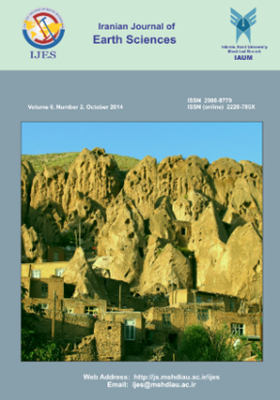Determination of the Geological Conditions During the Formation of Kaolinite and Bentonite Deposits in NW Alborz Mountains (Pirkoh-Deylaman) of Iran and the Study of Its Practical Properties for Use in the Porcelain Industry
Subject Areas : MineralogyFarzad Asadi 1 , Ali Darvishzadeh 2 , Ali Montezeri 3
1 - Faculty member of Azad Islamic University of Lahijan, Islamic Republic of Iran
2 - Faculty member of Azad Islamic University of Lahijan, Islamic Republic of Iran
3 - Faculty member of Azad Islamic University of Lahijan, Islamic Republic of Iran
Keywords:
Abstract :
The area under study is located in northern Iran at 36° 47’ latitude and 50° 12' longitude. It is 15 km from southeastern Deylaman. Petrological study of the kaolin mother rock (Eocene age) under a microscope shows that the rock is vitric tuff with a rhyolitic combination containing falcated and embowed glass shards. The thickness of the layer is approximately 20 meters, formed unconformably on a layer of conglomerate with a thickness of approximately 400 meters. Because the shards have a falcated and embowed shape and the percentage of reworked material within them is low, the tuff can be considered a type of pyroclastic airfall. The results of the study prove that ash falling occurred in the water. The stratabound layers show syngenetic deposits to be the main factor in the formation of the clay, bound as a result of alterations.


